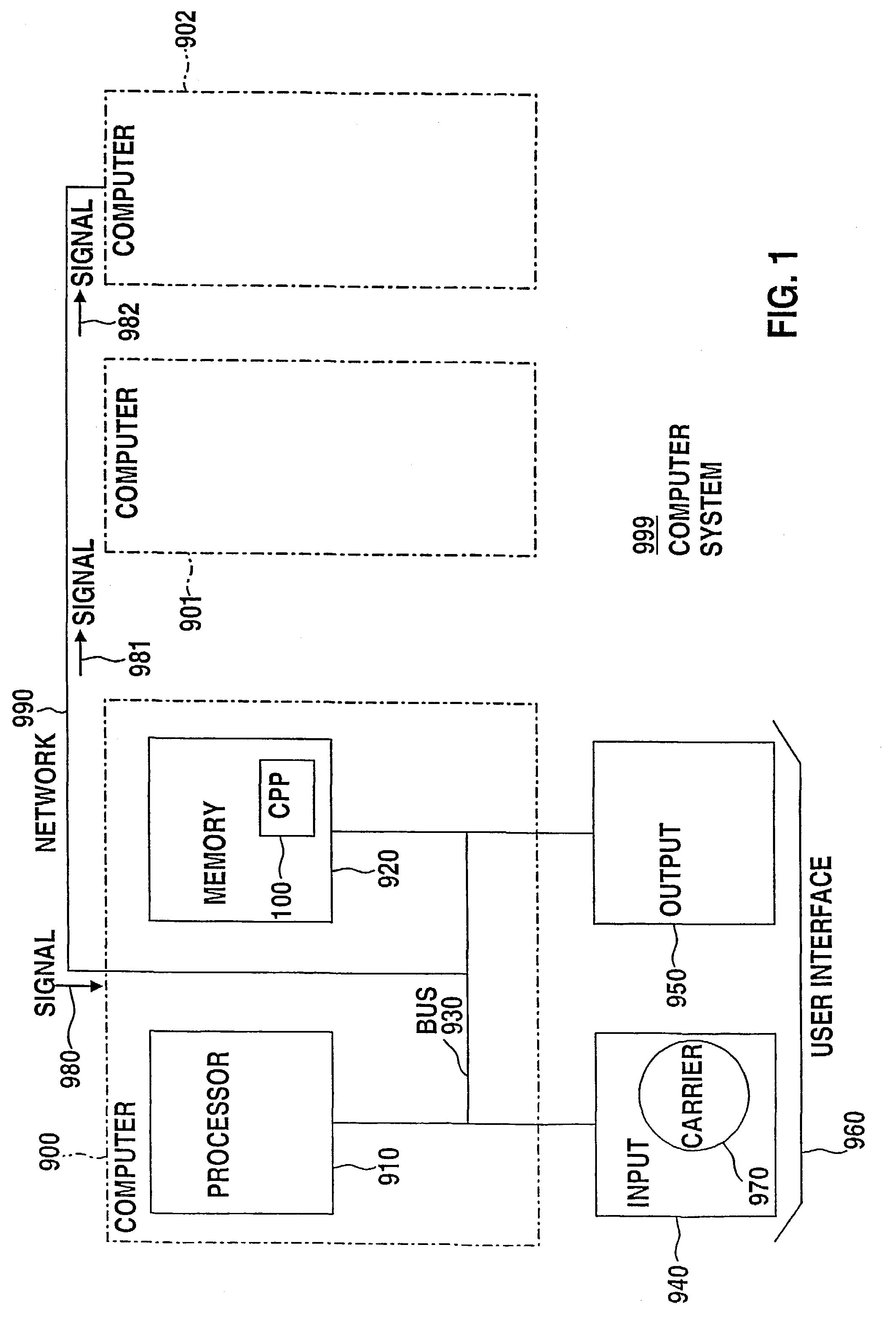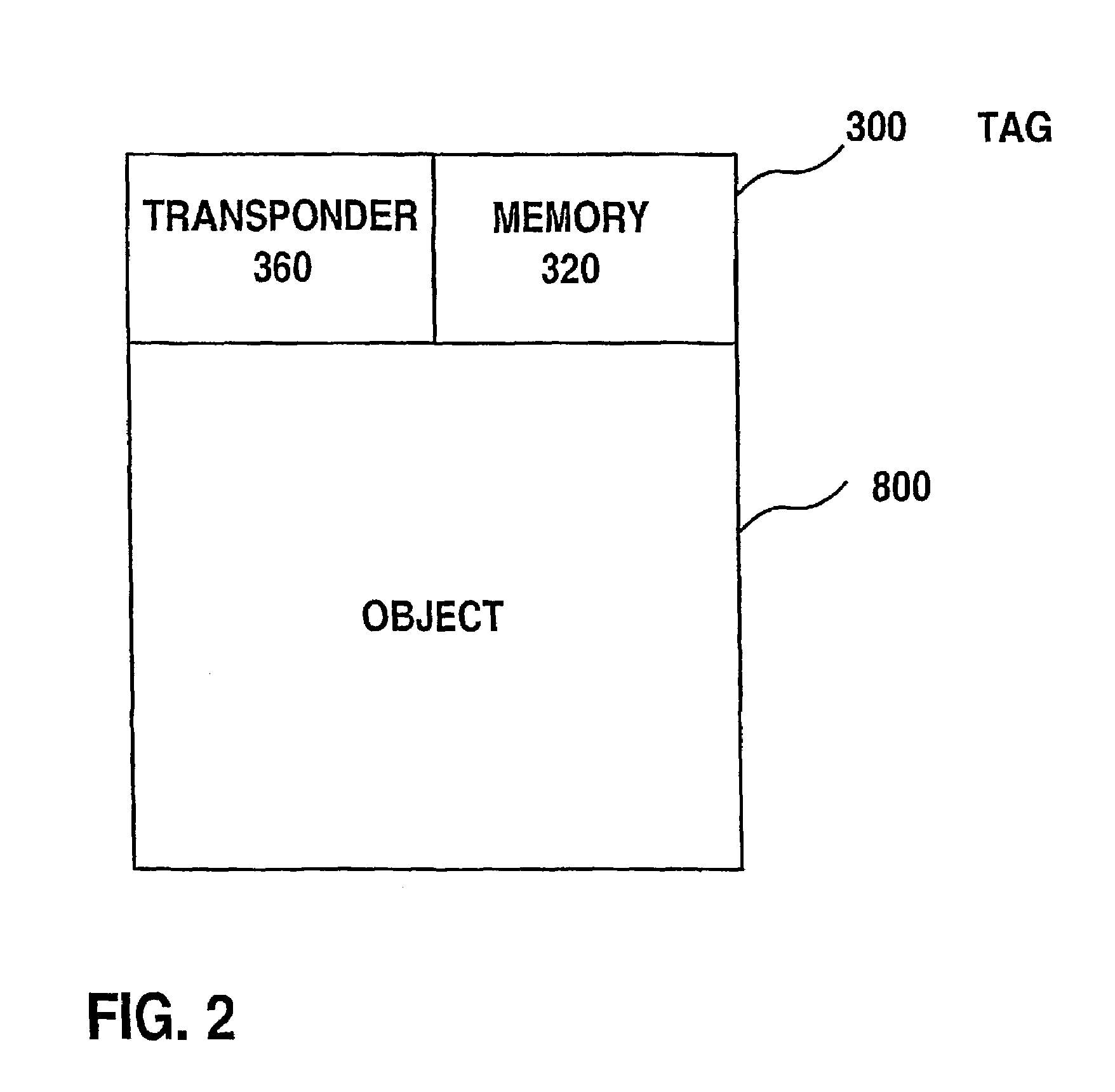System, method, computer program product for communicating data for objects that are transported from first location to second location
a technology of object communication and object, applied in the field of data processing, can solve the problems of limited memory capacity of each tag, inability to store as much data as desired, and inability to meet the requirements of data storage, etc., and achieve the effect of less memory space, reduced network load, and no longer challenging the non-uniformity of memory siz
- Summary
- Abstract
- Description
- Claims
- Application Information
AI Technical Summary
Benefits of technology
Problems solved by technology
Method used
Image
Examples
Embodiment Construction
[0052]A list of reference numbers is provided prior to the claims. For convenience of explanation, terms are used as follows:
[0053]Object stands for any physical item that can be moved, such as a merchandize item or product, a container, a book, a periodical, magnetic or optical media, a package, a letter, a painting, an electronic device, an animal, an automobile, a bicycle, or the like.
[0054]“Tag” stands for any communication apparatus attached to the object, also referred to as “smart digital object SDO” or “smart label”. “Tagged object” or “tag / object combination” stand for an object with one or more tags. Preferably, a single object has a single tag; optionally, further embodiments can be implemented with multiple objects sharing a single tag. Single objects with multiple tags are also possible. “Location” stands for any area, such as a warehouse, a vehicle, a production site, an office, a company, or a retail store.
[0055]“Transponder” stands for a communication means in the ta...
PUM
 Login to View More
Login to View More Abstract
Description
Claims
Application Information
 Login to View More
Login to View More - R&D
- Intellectual Property
- Life Sciences
- Materials
- Tech Scout
- Unparalleled Data Quality
- Higher Quality Content
- 60% Fewer Hallucinations
Browse by: Latest US Patents, China's latest patents, Technical Efficacy Thesaurus, Application Domain, Technology Topic, Popular Technical Reports.
© 2025 PatSnap. All rights reserved.Legal|Privacy policy|Modern Slavery Act Transparency Statement|Sitemap|About US| Contact US: help@patsnap.com



